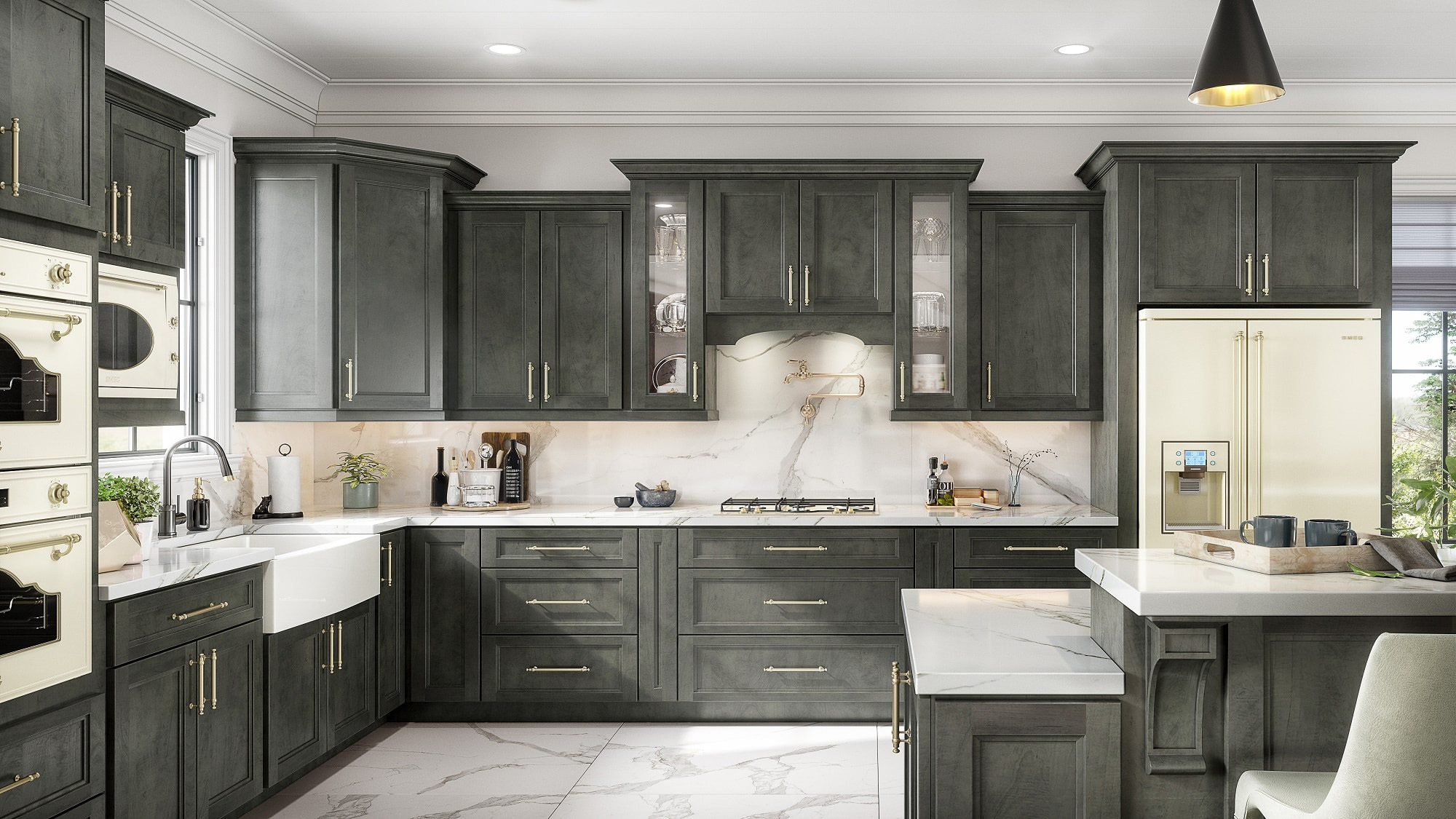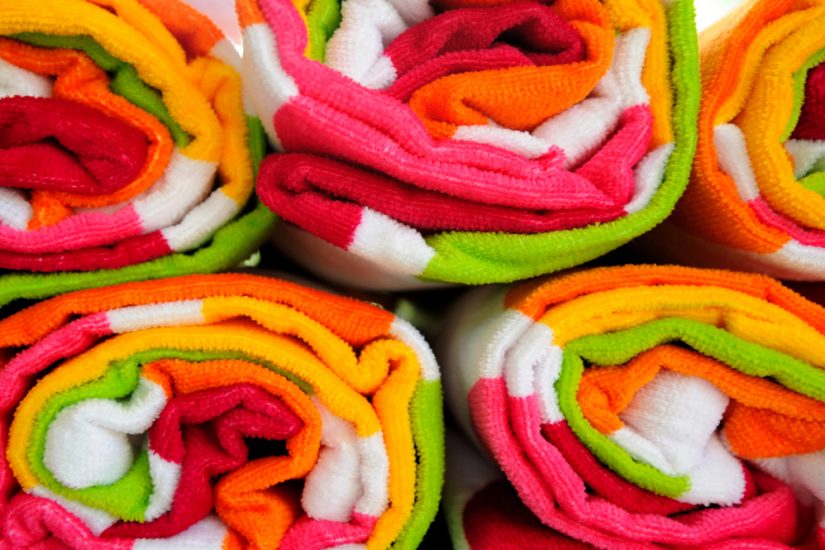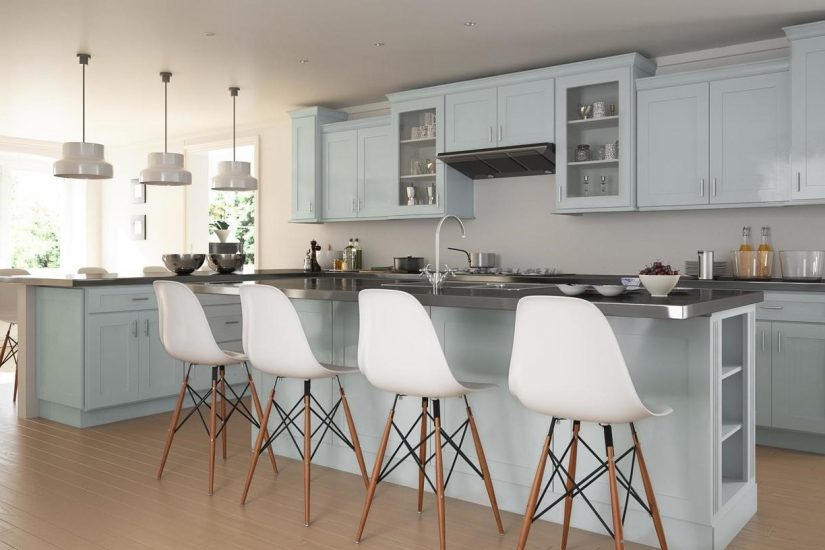The kitchen is said to be the heart of the home, and the heart of every kitchen is its cabinetry. Kitchen cabinets are the focal point of this very important room, which is why it is imperative that you have the right ones. Understanding the different styles of cabinets that are available will help you choose the perfect fit for your home.
The easiest way to classify kitchen cabinets is by traditional, contemporary, modern and transitional. Many individual types fall under each category, but we will use these four styles to help educate you on their general attributes and differences.
Style #1: Traditional
Traditional kitchen cabinets are classic styles that have a timeless feel. They can be painted or stained, or incorporate glass doors. They tend to be understated but still have of-the-era elements to avoid seeming outdated.
A popular type of cabinet you may see while shopping is a Shaker kitchen cabinet. This type of kitchen cabinet is very common in both traditional and contemporary kitchens. The reason this type of cabinetry works for both styles of kitchens is its simple and clean lines. Originated during the colonial era in America, Shaker cabinets gained appeal for their simple and functional design, which was the favorable look. Their main characteristic is flat paneled doors with rail frames. Quality woods are mostly used for the construction and are left in their natural state with a finish, or painted for a more contemporary look.
Style #2: Contemporary
Contemporary kitchen cabinets are minimalistic, following the “less is more” approach applied by architect Ludwig Mies van der Rohe. Sleek lines and a clean look define the minimal, contemporary style of kitchen cabinets. Accents may include doors with no dimension or metal hardware pulls.
Even though Shaker cabinets work well in traditional kitchens, they are also very popular in contemporary kitchens. Their simple design is very complementary to the minimalistic style. While natural wood Shaker cabinets are a favorite in traditional kitchens, contemporary kitchens benefit from a painted variety, such as white.
Style #3: Modern
Modern design styles lean toward futuristic ideas that are one step ahead of contemporary. Although modern kitchen cabinets may also be sleek and minimalistic like contemporary cabinets, they often have unique elements that you wouldn’t find in a contemporary kitchen. Mismatching fabrics and materials is one trend in modern kitchens, and you can create this contrast look by using different kitchen cabinets in different areas (either two different styles or two different colors).
Style #4: Transitional
Transitional kitchen cabinets are a blend of traditional and modern. By blending the best of both worlds, they complement the classic elements and modern fixtures that are both found throughout the transitional kitchen. Dark shades with rich finishes and bold details are two common characteristics of transitional kitchen cabinets. Although there are many different varieties of this style, one common feature is that they all make a bold statement.




